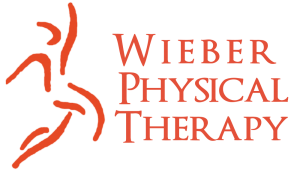By Matt Gadient PT, OCS, CSCS
The rotator cuff is a group of four muscles and tendons that surround the shoulder joint, keeping the head of your upper arm bone within the shallow socket of the shoulder. Your shoulder is one of the most used joints in the body with a wide range of motion but at the expense of stability, which makes it susceptible to injury.

Common Symptoms:
Dull ache in the shoulder, disturbed sleep especially if you lie on the affected shoulder, pain with lifting and lowering the arm, arm weakness
Causes
Rotator cuff pain can be a result of a specific mechanism of injury or from progressive wear and tear of the tendon tissue. Repetitive overhead activity, heavy lifting over a prolonged period of time, and the development of bone spurs in the bones around the shoulder may irritate or damage the tendon.
Risk factors
The following factors may increase your risk of having a rotator cuff injury:
- Age. As you get older, your risk of a rotator cuff injury increases. Rotator cuff tears are most common in people over the age of 40.
- Certain sports. Athletes who regularly use repetitive arm motions, such as baseball pitchers, archers and tennis players, have a greater risk of having a rotator cuff injury.
- Construction jobs. Occupations, such as carpentry or house painting, which require repetitive arm motions, often overhead, can damage the rotator cuff over time.
- Family history. There may be a genetic component involved with rotator cuff injuries as they appear to occur more commonly in certain families.
Diagnosing a rotator cuff injury
- Physical examination: the process of assessing range of motion and the quality of that movement, shoulder strength, posture, muscle loss, sensation and reflexes, and other specific tests.
- Imaging: X-Ray to provide information on the overall structure of the shoulder, MRI to provide information on soft tissue structure of the shoulder (muscle, tendon, ligaments fluid) or CT.
Treatments Options:
Rest and ice is usually the best place to start after a musculoskeletal injury. Immobilizing the shoulder for more than 4-7 days can start to lead to other problems like scar tissue formations, so if your symptoms persist past 7 days it is a good idea to contact your physical therapist or primary doctor.
You may work with a physical therapist to restore flexibility and strength to your shoulder after a rotator cuff injury. A physical therapist may also provide ergonomic suggestions for work or teach you better body and lifting mechanics that will help prevent re-injury.
If conservative treatments haven’t reduced your pain, your doctor might recommend a steroid injection into your shoulder joint, especially if the pain is interfering with your sleep, daily activities or exercise. While such shots are often helpful, they should be used judiciously, as they can contribute to weakening of the tendon. If needed, you may speak with you physician about surgical options as well.
By Matt Gadient PT, OCS, CSCS
References:
Orthopaedic Physical Therapy Secrets
Web MD

Leave a Reply
You must be logged in to post a comment.